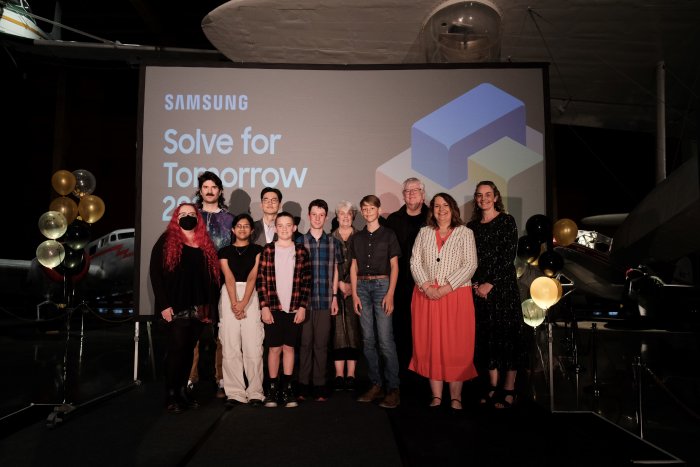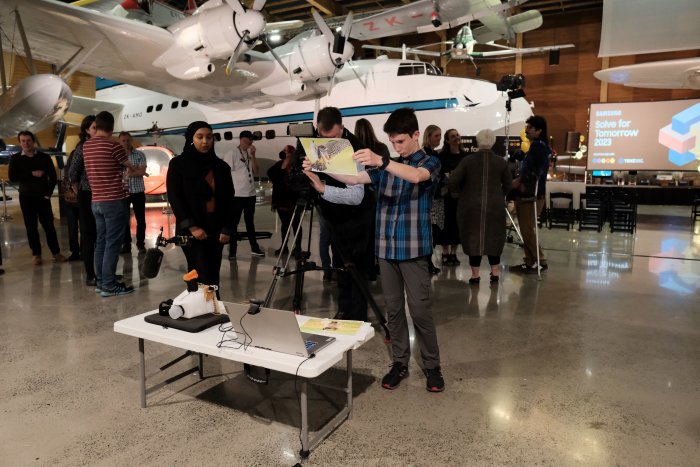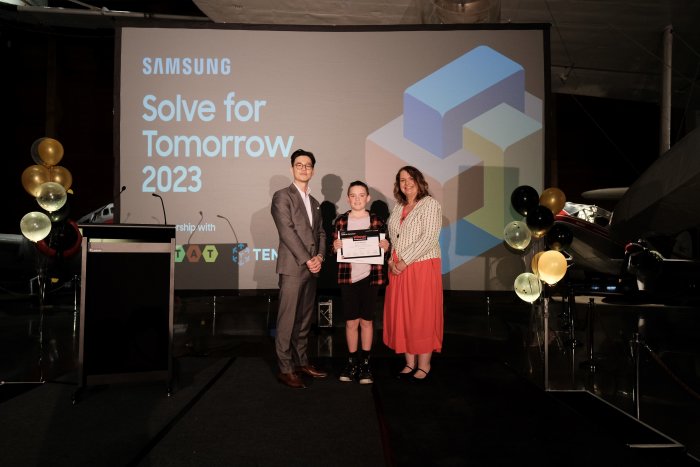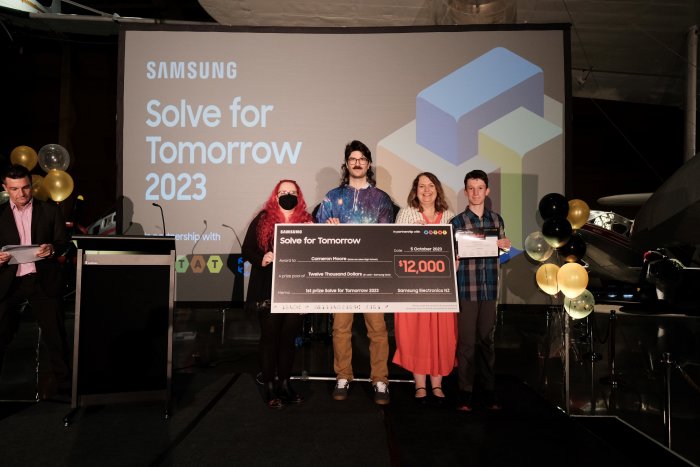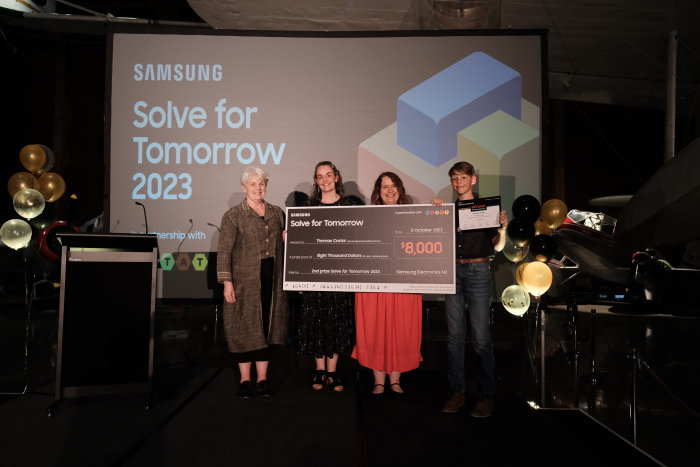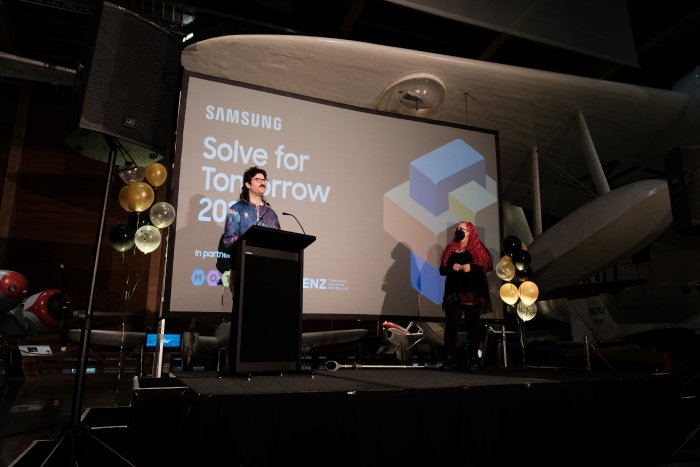Samsung Solve For Tomorrow 2023 Winners Announced

KIWI KIDS CHAMPION CONSERVATION AS SAMSUNG REVEALS 2023 SOLVE FOR TOMORROW WINNERS
NEW ZEALAND – 6 October 2023 – An outstanding year of Samsung Solve for Tomorrow entries has seen conservation high on the agenda for many Kiwi kids, with more than 50% of entries dedicated to conservation and managing climate events. Year nine Rotorua student, Cameron Moore, developed the most outstanding entry on this theme and for the competition; and has been crowned the 2023 winner of Samsung Solve for Tomorrow for his invention ‘Humane Trap for Wallabies’.
Samsung Solve for Tomorrow is a nationwide competition delivered in partnership with MOTAT and TENZ, challenging the next generation of Kiwi innovators to harness the power of STEAM (Science, Technology, English, The Arts and Maths) to create meaningful change within their communities.
Cameron wowed the judges with his innovative solution to tackle Rotorua’s wallaby problem and protect Aotearoa’s native forest without harming local wildlife. His solution harnessed both the power of artificial intelligence and design thinking.
“Wallaby infestation is a prevalent issue in New Zealand that conservationists are working to solve. Cameron’s out-of-the box thinking to come up with a new solution to this problem, and the prototype he built himself using AI, is truly exceptional. His invention could easily be implemented in New Zealand’s forests and could even have applications beyond wallabies!” says Dr Siouxsie Wiles.
However, it’s not just native forest conservation that Kiwi kids are tackling. Auckland year 8 student, Thomas Costar, was awarded second place, designing a revolutionary drainage system that could be built into homes across the country to prevent energy loss.
“What impressed me the most about Thomas’ project, was the scientific approach he took to development, and his demonstration of the design thinking process. His experimentation and rigorous testing resulted in a much more applicable design than his first attempt. This perseverance is a skill that will be critical throughout his career, whichever path he decides to pursue!” says Dr Joel Rindelaub.
The judges were so impressed with this year’s entries that they also awarded two students with highly commended prizes; year 7 student Archie Gilchrist whose project aims to protect kiwis from predators and year 10 student Sarah Perera who created a completely sustainable pen that biodegrades naturally.
“It’s fantastic to see these students applying the skills they are learning at school, in STEAM and design thinking, to tackle issues that are important to them. There was a noticeable focus on preserving our planet this year, and the ideas they came up with to do so makes me hopeful about the future,” says Simon Smith, Head of Marketing at Samsung New Zealand.
The first and second place winners shared a prize pool of $20,000 in cash and Samsung tech for them and their schools, with the highly commended entries also winning Samsung tech. Each winner was recognised at an awards ceremony last night.
About Samsung Electronics Co., Ltd.
Samsung inspires the world and shapes the future with transformative ideas and technologies. The company is redefining the worlds of TVs, smartphones, wearable devices, tablets, digital appliances, network systems, and memory, system LSI, foundry and LED solutions. For the latest news, please visit the Samsung Newsroom at http://news.samsung.com
About Solve for Tomorrow
Delivered in partnership with the Museum of Transport and Technology (MOTAT), the Solve for Tomorrow competition is designed to build interest and proficiency in STEAM (science, technology, engineering, the arts, and mathematics). In the New Zealand competition’s second year, students were tasked to identify and create a solution for an issue important to them and their community, which were then judged on creativity and originality, relevance to the community, feasibility of the solution, presentation, and application of STEAM.
Launched in the US in 2010, the competition has been hugely influential internationally, with more than two million students and teachers participating across 33 countries. Read more about the competition here.
About the Museum of Transport and Technology (MOTAT)
MOTAT seeks to use the past, present and future technology and ingenuity of Aotearoa to educate and inspire the innovators of tomorrow. MOTAT provides multi-platform learning opportunities, offering STEAM Cells programmes in schools, onsite education programmes at the Museum, micro-credentials and online workshops direct to the classroom. Experience interactive learning and exploration through exhibitions, events and education programmes. Visit MOTAT.NZ
For more information, please contact:
Simon Smith, Samsung Electronics Co., Ltd.+64 27 667 6664 simon.smith@samsung.com
Lucy Smith, Acumen on behalf of Samsung
+64 212 668815 lsmith@acumennz.com
Samantha Perry, MOTAT
+64 21 680 335
